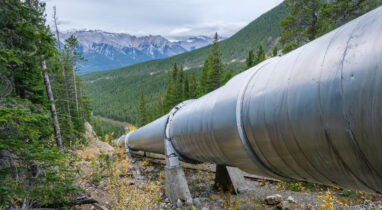The report of the Commissioner of the Environment and Sustainable Development on Canada’s carbon pricing system, released yesterday, identifies important areas for improvement in Canada’s cornerstone climate policy.
One of the Commissioner’s most significant findings is the need for the federal government to increase the benchmark stringency of the industrial emissions pricing systems implemented by most Canadian provinces. These systems collectively apply to more than 40% of Canada’s emissions.
“Carbon pricing systems for industry must be strengthened across the country in order to achieve the deep emissions cuts forecast by the federal government’s 2030 Emissions Reduction Plan,” said Clean Prosperity Executive Director Michael Bernstein.
We hope the federal government will urgently consider strengthening the benchmark stringency criteria for provincial industrial carbon pricing systems well before its current 2027 deadline. Waiting to strengthen provincial industrial carbon pricing systems could jeopardize Canada’s ability to meet its 2030 emissions-reduction targets.
In addition, assessing the provincial systems to ensure that they are actually meeting the benchmark criteria — as the government has committed to do later this year — is critical.
“Carbon pricing systems for industry must be strengthened across the country in order to achieve the deep emissions cuts forecast by the federal government’s 2030 Emissions Reduction Plan.”
Clean Prosperity Executive Director Michael Bernstein
The Commissioner is also right to point out that carbon pricing is disproportionately affecting small enterprises. Clean Prosperity has long argued that more needs to be done to make carbon pricing fair for small and medium-sized businesses. We also believe that more should be done to address the disproportionate cost burden that falls on rural and Indigenous communities, as well as farmers. Carbon pricing must be applied fairly across the economy in order to be effective.
As the government looks to improve Canada’s carbon pricing system, it should prioritize the commitment made in the Emissions Reduction Plan to look at measures that will guarantee the future price of carbon emissions, like carbon contracts for difference. Giving business and industry confidence in the trajectory of the carbon price will unlock billions in needed investment that will help create good-paying jobs across Canada.
Transparency and rigorous analysis of climate policy are essential for achieving Canada’s climate targets, and the Commissioner’s scrutiny of Canada’s approach to carbon pricing is welcome. We believe the findings highlight the need for government to share its modelling assumptions publicly so they can be better understood and evaluated. We also support the Commissioner’s finding on the need for greater transparency in provincial industrial emissions pricing systems — in particular, how these systems meet the federal benchmark criteria.
The Commissioner’s findings are a call for federal and provincial governments to make needed improvements to what is a fundamentally sound approach for achieving significant emissions reductions, including one of the strongest carbon pricing systems in the world. The critical task now is to accelerate the pace of implementation.



